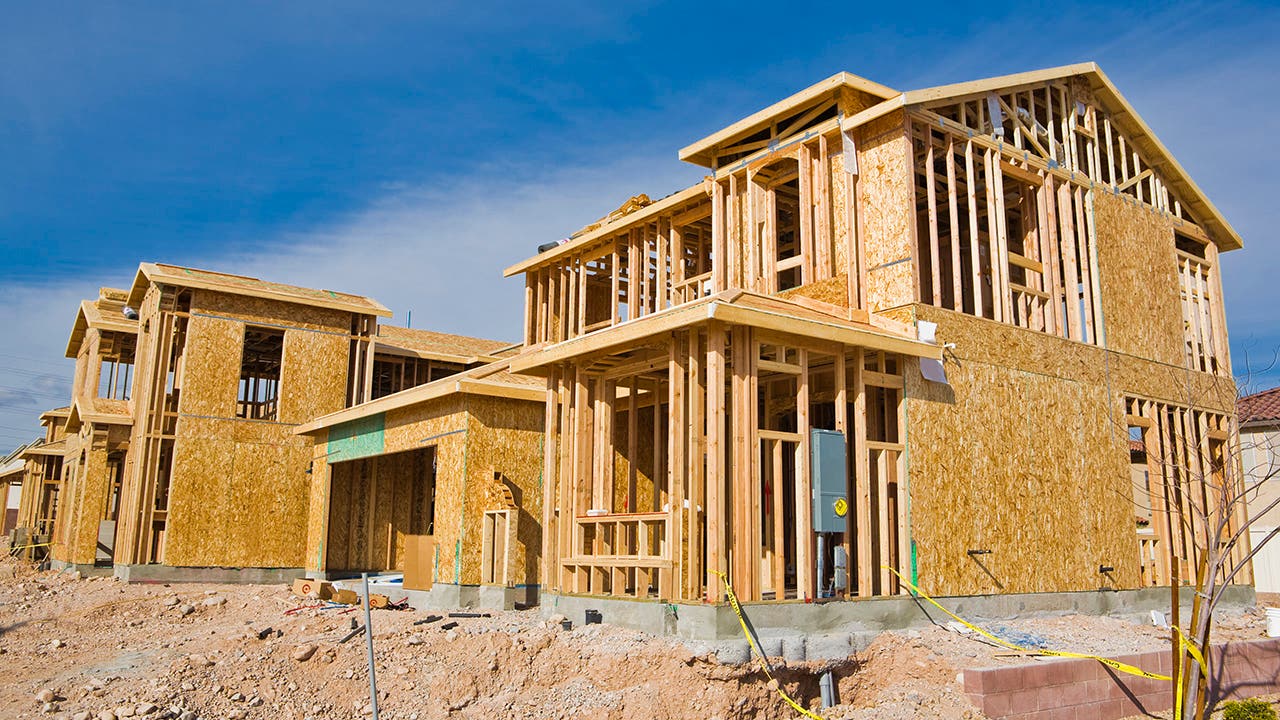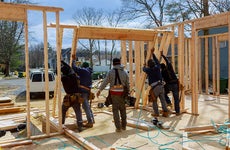How to build a house before selling yours

The Bankrate promise
At Bankrate we strive to help you make smarter financial decisions. While we adhere to strict , this post may contain references to products from our partners. Here's an explanation for .
After years of low housing inventory, plenty of hopeful homeowners have explored the option of building their own house. With new construction, you don’t just get a place to live, you also get control. You might be able to choose everything from your floor plan to your finishes. It can be a great way to get into your dream home — but there are definitely hurdles to overcome.
The timing of the transition from your current home to your newly built one can be a big roadblock. Sales can progress quickly, especially in a competitive local market, and construction work often takes longer than expected. Here are some key topics to consider if you’re wondering how to build a house before selling yours.
Building a new house while selling your current one
In an ideal world, you would be able to live comfortably in your current house until the new one was completed and ready to move into. But building a new home is pricey, and if you stay in your existing one in the meantime, you’ll be paying that mortgage on top of the construction costs. So you need to plan ahead and be organized.
First, estimate how much your new build will cost. Factor in the cost of buying land, if applicable, plus all of the necessary financing costs, fees, permits, materials and labor. If you’re buying directly from a developer, this should be easy; if not, your general contractor should be able to give you a ballpark idea. Bankrate’s new-home calculator can help you crunch the numbers to figure out how much house you can afford.
New-construction homes took an average of 7.2 months to build in 2021, according to Census data. So you’ll need to be prepared to cover both construction costs and your current mortgage for at least that long.
But it’s wise to expect the unexpected when it comes to your building budget. “Timelines for new builds can be volatile, depending on the uniqueness of the features of the project,” says Marine Sargsyan, an economist at Houzz. Now more than ever, construction projects come with delays — caused by material and labor shortages, supply chain issues, etc. — and delays cost money. You can protect yourself to some degree by writing into your contract timing clauses, penalty clauses for delays and more. But it’s smart to add 10 percent to your budget to account for possible surprises.
Financing a new-construction build
Fortunately, you don’t need to come up with all of this money out-of-pocket. There are several ways to finance a new build. Here are a few common ones:
- A construction loan: Construction loans function as their name suggests: They cover various costs of construction. They usually require at least 20 percent down, and a lender typically will not release progress payments to the contractor without the work being inspected. With a construction-only loan, you’ll be responsible for repaying the balance when the project is complete. With a construction-to-permanent loan, you can essentially convert the borrowed money into a mortgage once the home is finished. This saves on closing costs, but while you still have your current home, it means paying two mortgages.
- A home equity loan or home equity line of credit (HELOC): Speaking of second mortgages, if you’ve built up a good chunk of equity in your current home, you might be able to borrow against it. With a HELOC, you get a revolving line of credit that you can apply toward construction costs. A home equity loan, however, gives you a lump-sum payment, to be paid back over time with interest. In either case, the amount of equity you have in your house will dictate how much financing you can get. This will likely be a cheaper loan than a construction loan, but it won’t come with the same protections. (Protections can be built into the contract, however.) .
- A bridge loan. Short-term bridge loans leverage your current home as collateral and generally last only six to 12 months. Borrowers must be in good financial standing to get this loan, and it typically comes with a higher-than-normal interest rate. But be careful: Due to a bridge loan’s short lifespan, an unexpected delay might push your project past the term of the loan and trigger penalties.
You might also hear people suggest borrowing against your 401(k) to help pay construction costs. Be extremely careful there as well — doing so might be possible, but it generally isn’t advisable, and it could trigger early-withdrawal penalties. It’s best to explore all of your other financing options first and let your 401(k) be for retirement, not house-building.
In the end, to pay for the new home’s construction costs, you might need to sell your current home sooner than you would prefer. According to Houzz research, “42 percent of recent homebuyers, which includes those who have not yet moved into their homes, relied heavily on cash from their previous home sale,” Sargsyan says. Maximizing your sale price is paramount in this situation, so don’t rush things — but you may need to find a place to live while you wait for your new home to be completed.
Housing options for in-between
Ideally, there won’t be a huge gap between when you sell your current home and when your new one is ready to move into. Your real estate agent may be able to help here: Work with them to establish sale contingencies that can ease your transition.
Some contingencies allow you to back out of the deal if you haven’t found suitable housing yet — for example, if your new home isn’t yet livable. Be advised, though, that provisions that protect you, as the seller, could put buyers off.
If you find yourself in need of temporary housing while construction finishes up, and couch-surfing with friends or family is not appealing, you have several options. Whichever option you chose, you’ll probably also want to explore the cost of a local storage unit for your furniture and non-essential items.
- A rent-back agreement: With this option, you would pay the person buying your current home a monthly rent to allow you to continue living there until your new home is ready. This may require some finesse on the part of your real estate agent, but the arrangement is not unheard of.
- A short-term rental: Some landlords and property managers offer month-to-month leases. This would allow you to rent a temporary place, typically an apartment, for only as long as you need it.
- A long-term vacation rental: Companies like Airbnb and VRBO often have locations that can be snapped up for longer stays than the typical one-week vacation. This can provide temporary housing that doesn’t require you to sign a lease.
- An extended-stay hotel: These types of hotel rooms are often more like studio apartments, with a small living area and kitchenette. They give you a large measure of flexibility — you can check out whenever your new home is ready.
Bottom line
Ultimately, if you want to build a house before selling yours, you need to be prepared. Explore all your financing options, analyze the ideal timeline and work closely with your real estate agent and contractor to keep everything on schedule. Things can go wrong even with the most careful planning, though, so having an emergency fund and a short-term housing option on the back burner can eliminate some stresses.
Related Articles



